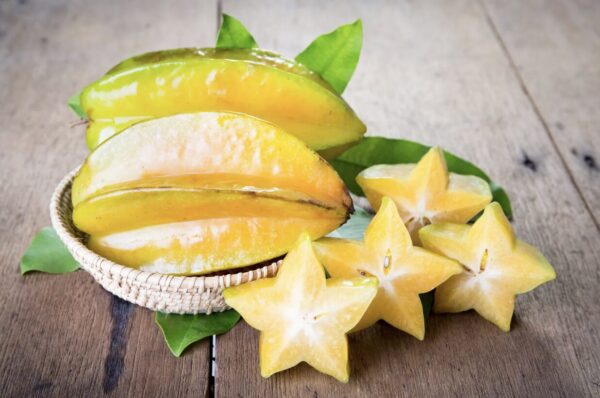Would You Eat Something That Could Kill You?
For most of us, food means comfort — it’s about flavor, nourishment, and shared joy. But for millions of people around the world, one ordinary meal could turn deadly.
It sounds shocking, but some foods carry very real risks. Despite that, they remain daily staples in many countries. Let’s take a closer look at one of the most dangerous foods on Earth — and why people still depend on it.

The Cyanide-Loaded Root
Cassava might look like just another harmless root vegetable, but it hides a deadly secret.
Its roots and leaves contain cyanogenic glycosides — natural compounds that release cyanide if the cassava isn’t properly processed. Eating it raw or undercooked can lead to cyanide poisoning, which may cause paralysis, thyroid problems, or even death.
According to the World Health Organization (WHO), cassava poisoning claims around 200 lives every year, earning it the grim nickname: “the world’s deadliest food.”
Even though it’s risky, cassava is a crucial food source for over 800 million people across about 80 countries, according to the WHO.
It’s drought-resistant, easy to grow, and packed with much-needed carbs. When it’s properly processed — soaked, fermented, dried, or boiled — the dangerous cyanide levels drop, making it safe to eat. For millions, cassava isn’t just food — it’s survival.
Deadly delicacy
Japan’s famous fugu dish, made from pufferfish, carries a terrifying risk. The fish contains a toxin said to be 200 times more lethal than cyanide, reports BBC.
Tetrodotoxin poisoning hits fast — first comes numbness, then paralysis, and finally death — all while the victim stays conscious. And the worst part? There’s no known cure.
According to Japan’s Ministry of Health, about 50 people — mostly amateur cooks and fishermen — are poisoned by pufferfish each year, and a few cases end in death.
Still, fugu remains a prized delicacy in Japan, often served raw as sashimi or cooked in hot pots. Only certified chefs with years of training are allowed to prepare it, since they must skillfully remove the poisonous organs — the liver, ovaries, and intestines.
For some daring diners, the faint tingling left by trace toxins isn’t a warning — it’s part of the thrill.
Hidden Neurotoxin
Starfruit might look harmless, but it contains a neurotoxin that can be deadly for people with kidney disease. 😳
If the kidneys can’t filter it out, the toxin builds up, causing confusion, seizures, or even death — sometimes just hours after eating it. Early signs include hiccups, vomiting, or weakness.

For those with healthy kidneys, though, starfruit is perfectly safe — and delicious! 🌟
This yellow, star-shaped fruit is rich in vitamin C, antioxidants, and potassium, which can help lower your risk of heart attack or stroke, according to WebMD.
Sweet treats with a deadly core
Cherry pits and apple seeds contain amygdalin, a compound that turns into cyanide when chewed or crushed. 😬
In small amounts, it’s harmless — but large quantities can cause dizziness, nausea, and breathing problems.
So, eat the fruit — just don’t crush or chew the pits. Swallowing one whole won’t hurt you, but breaking it open can release toxins.
Toxic side dish
Ever seen green potatoes? That color means they’ve been exposed to light, which triggers chlorophyll — harmless by itself — but also solanine, a natural toxin.
Healthline warns that high doses can cause nausea, paralysis, or even coma, though severe cases are rare.
The fix is simple: peel green potatoes thoroughly and toss any with sprouts or a strong green tint.
Nutty by nature
Raw cashews might look like a healthy snack, but they naturally contain urushiol — the same toxin found in poison ivy and poison oak! 😳
That’s why the “raw” cashews you buy in stores have already been steamed or roasted to make them safe to eat.
Raw Cashews — Nature’s Poison Ivy Trap
If you were to eat or even handle truly raw cashews, you’d likely regret it fast. These nuts contain urushiol, the same toxic compound found in poison ivy. Touching or consuming them can cause itchy, inflamed skin and a painful burning rash, according to Healthline.
Luckily, the “raw” cashews you find in stores aren’t really raw — they’ve been steamed or roasted to remove all traces of urushiol, making them perfectly safe to eat.
(Fun fact: mango skins also contain urushiol — so if you’ve ever itched after peeling one, now you know why.)
Nutmeg — When a Spice Trip Turns Dark
Nutmeg may smell like cozy holidays, but too much of it can turn your kitchen into a chemistry experiment. This fragrant spice contains myristicin, a natural compound that affects the nervous system. In large doses, it can cause hallucinations, nausea, rapid heartbeat, and even seizures.
Just two teaspoons can trigger severe symptoms lasting for days — and in rare cases, studies report psychosis lasting up to six months.
Used sparingly, nutmeg adds warmth to desserts and drinks. But overdo it, and your holiday cheer might come with a hospital visit.
Deadly Mushrooms — Beauty That Kills
Not all mushrooms are created equal. Some wild varieties, like the death cap, contain lethal toxins that shut down the liver and kidneys. This particular mushroom is infamous for claiming the life of Pope Clement VII back in 1534 — a grim reminder that in the world of fungi, one wrong bite can be your last.
Fatal Fungi
According to Britannica, only a handful of the world’s 70–80 poisonous mushroom species are actually fatal when eaten. The real danger lies in their deceptive looks — many poisonous varieties look almost identical to the edible ones.
You don’t need to give up mushrooms altogether — just stick to store-bought varieties unless you’re an experienced forager. A wrong guess in the forest can be your last.
Sweet but Deadly: Rhubarb
Rhubarb might be a classic in pies and jams, but not every part of this plant is safe.
While the stalks are perfectly edible (and deliciously tart), the leaves contain oxalic acid — a natural toxin that can cause kidney failure if consumed in large quantities.
So, when you’re baking your next rhubarb crumble, remember: enjoy the stalks, ditch the leaves, and keep this dessert strictly non-lethal.
Deadly Beans
Raw or undercooked kidney beans contain phytohaemagglutinin, a toxin that can trigger intense vomiting and stomach cramps after eating just a few.
The fix is simple: boil them for at least 10 minutes to destroy the toxin completely. But beware — cooking beans at low heat (like in a slow cooker) won’t help; in fact, it can make them even more toxic.
So before you toss them into your chili, make sure they’re fully cooked — otherwise, dinner might come with a trip to the ER.
Have you ever tried one of these risky foods?
Tell us about the most dangerous thing you’ve eaten — and share this story to see who’s been the boldest eater in your circle!







